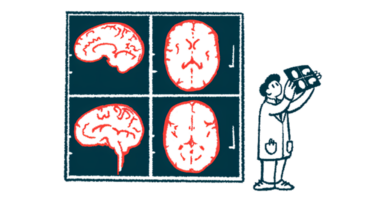Genetic modifications to myelin-making cells boost myelin repair
Transplanting engineered OPCs boosted repair in mice with brain lesions

Transplanting genetically engineered oligodendrocyte progenitor cells (OPCs), which give rise to mature myelin-making cells, significantly boosted myelin repair in mice with multiple sclerosis (MS)-like chronic brain lesions.
The cells were engineered to ignore chemical signals that would normally inhibit OPCs being recruited into lesions and then restore damaged myelin, a process called remyelination. The scientists plan to look for ways to translate the approach to patients.
“Our work is a proof of concept and the next step is to see if we can remove the need for transplants and edit the cells directly in humans,” Laura Wagstaff, PhD, a postdoctoral researcher at the University of Edinburgh in Scotland and the study’s first author, said in a university press release. “This is an approach similar to gene therapy which may be an effective method of promoting remyelination in the future.”
The study, “CRISPR-edited human ES-derived oligodendrocyte progenitor cells improve remyelination in rodents,” was published in Nature Communications. It was funded in part by the MS Society U.K.
Myelin is a fatty substance that surrounds and protects nerve cells and helps increase the speed at which they send electrical signals to communicate with each other. In MS, the immune system mistakenly launches harmful attacks on myelin, leaving nerve cells vulnerable to damage and degeneration.
Current MS therapies often work by suppressing the immune system to make it less likely to attack myelin. This can help slow disease progression and ease symptoms, but often cannot repair damage that’s already been done.
As therapeutic strategies to promote remyelination may help restore lost function, they are key areas of interest in MS research.
Overcoming a ‘hostile environment’
In the brain and spinal cord, myelin is generated by cells called oligodendrocytes. When there’s myelin loss, or demyelination, OPCs travel to the affected area and mature into oligodendrocytes that will work to restore myelin. But this natural repair process slows down with aging and seems to be further impaired in MS due to ongoing inflammation.
Research has shown there are low numbers of OPCs near brain lesions, suggesting that transplanting more OPCs into the MS brain could have therapeutic benefits. However, scientists believe there are anti-repair signals that inhibit remyelination in the MS brain even when OPCs are there.
“Many studies in the past have tried to transplant oligodendrocytes or similar cells into the brain to repair myelin,” said Anna Williams, PhD, a neurologist, professor at the University of Edinburgh, and the study’s senior author. “However, the hostile environment of MS lesions stops these transplanted cells from working.”
Here, the scientists sought a way to genetically engineer OPCs to ignore such anti-repair signals, making them better able to promote remyelination.
Genetically modifying OPCs
Research shows the protein SEMA3A is increased in MS brain lesions and is involved in sending chemical signals that repel OPCs away from lesions. SEMA3A exerts its effects through a protein receptor called NRP1.
To help the cells ignore the anti-repair signals from SEMA3A, the scientists grew OPCs from human stem cells and edited them to remove the gene that encodes NRP1. Lab studies showed these cells were indeed unresponsive to the effects of SEMA3A and were able to properly differentiate into mature oligodendrocytes.
Similarly, when the edited OPCs were transplanted into the brains of a mouse model that mimics chronic MS brain lesions, they traveled in greater numbers toward the lesions, whereas cells with NRP1 were repelled.
The effects were observed in both younger and aged mice, as well as when the transplant occurred either before or after lesions had developed. And the modified OPCs didn’t just migrate to brain lesions. Once there, they boosted remyelination.
“This is exciting as now we have shown that we can scientifically tweak cells in a dish and transplant them into models to improve repair,” Williams said.
It’s relatively easy to obtain large numbers of OPCs from stem cells and edit them, making the approach feasible for people, said the researchers, who noted, while it does sh0w promise, the genetic modification alone likely won’t completely restore myelin in all MS brain lesions as SEMA3A is just one inhibitory signal that could be playing a role.
“However, this finding allows us to take the next step, to choose other pathways in combination to target and edit,” they wrote.







